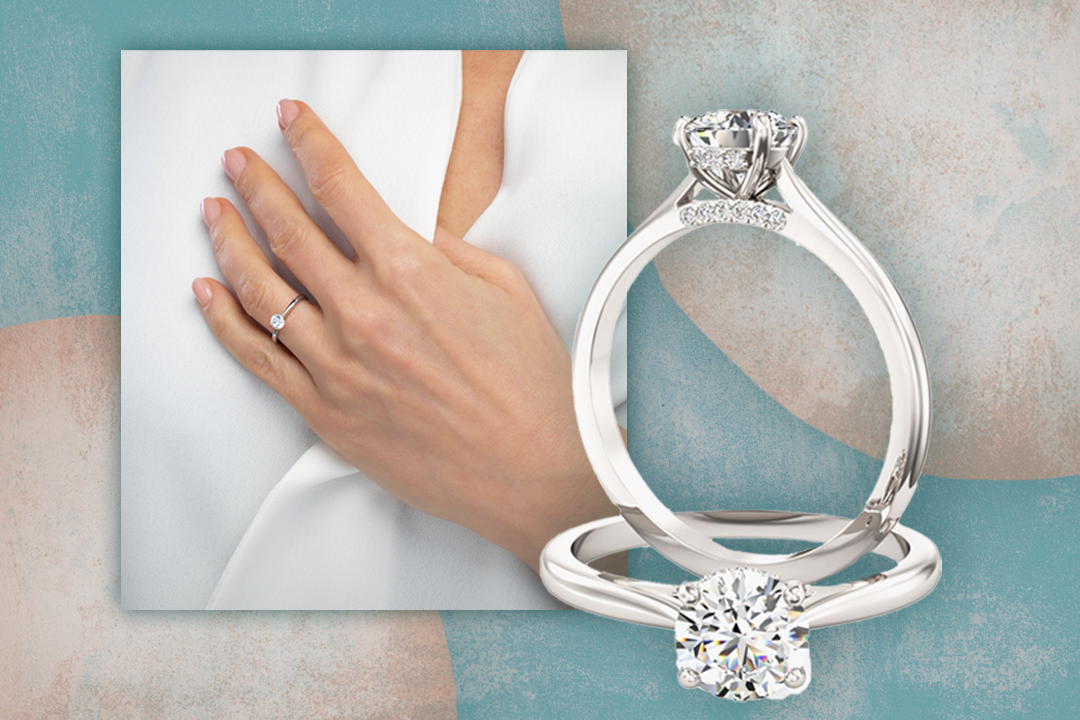
When it comes to choosing the perfect engagement ring, many people in the UK are now turning to lab-grown diamonds as an ethical, sustainable, and affordable alternative to traditional mined diamonds. Lab-grown diamonds are chemically identical to natural diamonds but are created in a controlled environment, making them an excellent option for those who wish to invest in a beautiful and environmentally conscious ring. However, choosing the right lab grown diamond ring involves more than just selecting the stone itself. It’s important to consider a variety of factors, including the diamond’s quality, the setting, and the jeweller’s reputation. Here’s a guide to help you make the right choice for your special occasion.
1. Understand the Four Cs: Cut, Colour, Clarity, and Carat
When selecting any diamond, including a lab-grown diamond, the Four Cs—cut, colour, clarity, and carat weight—are crucial factors to consider. These four characteristics determine the overall quality, appearance, and value of the diamond.
- Cut refers to how well the diamond has been shaped and faceted, which impacts its sparkle. A well-cut diamond reflects light beautifully, enhancing its brilliance.
- Colour refers to the degree of colourlessness in the diamond, with diamonds ranging from D (colourless) to Z (light yellow or brown). Lab-grown diamonds often offer more colourless options at a lower price point than natural diamonds.
- Clarity measures the presence of internal or external flaws, known as inclusions and blemishes. Lab-grown diamonds tend to have fewer inclusions than natural diamonds, offering clearer options.
- Carat weight refers to the size of the diamond. Larger carat weights are typically more expensive, but since lab-grown diamonds tend to cost less than their mined counterparts, you can often get a larger stone for the same price.
2. Consider the Diamond’s Certification
Just like mined diamonds, lab-grown diamonds should come with a certification from a reputable gemological institute, such as the Gemological Institute of America (GIA) or the International Gemological Institute (IGI). A certification verifies that the diamond has been evaluated for the Four Cs and assures its authenticity as a lab-grown diamond. In the UK, trusted jewellers will always provide certification with the purchase of a lab-grown diamond to ensure transparency.
3. Choose the Right Setting
Once you’ve decided on the perfect lab-grown diamond, it’s time to think about the setting. The setting not only holds the diamond in place but also influences the overall look of the ring. Popular settings for engagement rings include solitaire, halo, three-stone, and vintage-inspired designs. Each setting offers a different aesthetic, so choose one that complements your personal style.
Solitaire settings are timeless and elegant, while halo settings add extra sparkle by surrounding the diamond with smaller stones. Three-stone settings symbolize the past, present, and future, making them a meaningful choice. Vintage-inspired designs, on the other hand, exude classic charm and often incorporate intricate details like milgrain or filigree work.
4. Prioritize Ethical and Sustainable Practices
One of the main reasons people opt for lab-grown diamonds is their ethical and sustainable production. Unlike mined diamonds, lab-grown diamonds do not contribute to environmental damage or exploitative labour practices. When choosing your lab-grown diamond ring in the UK, it’s important to select a jeweller that prioritizes ethical sourcing and sustainability.
Look for companies that use eco-friendly methods to create their diamonds and responsibly source the materials used in the ring setting. Many UK jewellers now offer lab-grown diamond rings that are certified as carbon-neutral or use recycled precious metals, further reducing the environmental impact.
5. Set a Budget
Lab-grown diamonds typically offer more value for money than natural diamonds, allowing you to select a larger or higher-quality stone within your budget. That said, it’s important to establish a budget before you start shopping. Setting a budget will help you narrow down your options and prevent you from overspending.
While the price of lab-grown diamonds tends to be lower than natural diamonds, the overall cost of the ring will also depend on factors such as the setting, designer, and additional customizations. Many jewellers in the UK offer flexible payment plans, allowing you to spread the cost over time if needed.
6. Work with a Reputable Jeweller
Lastly, finding a reputable jeweller is essential when purchasing a lab-grown diamond ring. Look for jewellers with a strong reputation for customer service, quality, and transparency. Many UK jewellers specialize in lab-grown diamonds and offer a wide range of styles, ensuring that you can find the perfect ring for your taste and budget.
Check reviews and ask for recommendations from friends or family who have purchased similar rings. It’s also helpful to visit a jeweller in person to view the diamond’s quality and try on various settings to see what looks best on your hand.
Conclusion
Choosing the perfect lab-grown diamond ring in the UK involves understanding the diamond’s quality, selecting the right setting, and ensuring the jeweller’s ethical practices. By following this guide and working with a trusted jeweller, you can confidently select a stunning, sustainable, and meaningful lab-grown diamond ring that will last a lifetime.
